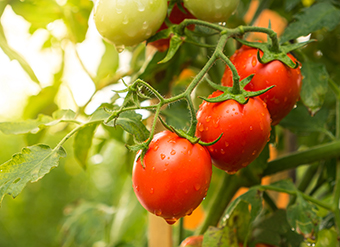Want to Sell Plants for More Money? Look to Labels
Garden consumers are willing to pay more for fruit plants with labels that incorporate logos they recognize, according to a recent University of Florida study. Findings from the unique study might help growers increase the marketability of their ornamental horticulture products through labeling.
As part of the study, consumer preferences, visual attention, and willingness-to-pay were measured to determine how each label or text combination impacted a consumer’s willingness to pay for a particular fruit plant.
During experimental auctions, different label formats were displayed to consumers who submitted a bid on the plant and then moved on to the next plant with a different label. Utilizing eye tracking software, a heat map was created to display where consumers looked at the plant or label and for how long.
“Research is often conducted on consumer attention, but we are the first to look at the format of the labels,” said Hayk Khachatryan, Associate Professor of agricultural economics based at the University of Florida/Institute of Food and Agricultural Sciences Mid-Florida Research and Education Center in Apopka. “For example, text and picture combinations.”
The amount of visual information used for decision making comes from as small of an area as the size of our thumbnail, and since part of our visual attention is subconscious, we do not control it fully, Khachatryan points out. This makes the eye tracking software an important part of understanding what factors influence visual attention and subsequent consumer buying decisions.
The research found consumers are willing to pay more for plants with labels with logos they recognized and bid significantly less for plants with text-only labels.
“Consumers look for visual cues to prompt their purchases,” Khachatryan said. “Most garden centers in Florida could improve labeling practices. The quality of horticultural product labeling could be similar to what you see in grocery stores to help consumers make choices. They may want something grown locally, and carefully crafted labels can help drive those decisions.”
Another element of this research was to consider the halo effect, a form of bias where an opinion made in one area may influence many others even if there is not a meaningful reason for the connection. In this study, the halo effect referred to consumers’ misperception that an eco-labeled product is superior to non-labeled products. It could be correct, but not necessarily in all cases, and due to the halo effect consumers sometimes do not distinguish between the two, Khachatryan concluded.
The study is part of a series of research on consumer buying behavior as it relates to labeling and was conducted with support from the National Horticulture Foundation.








